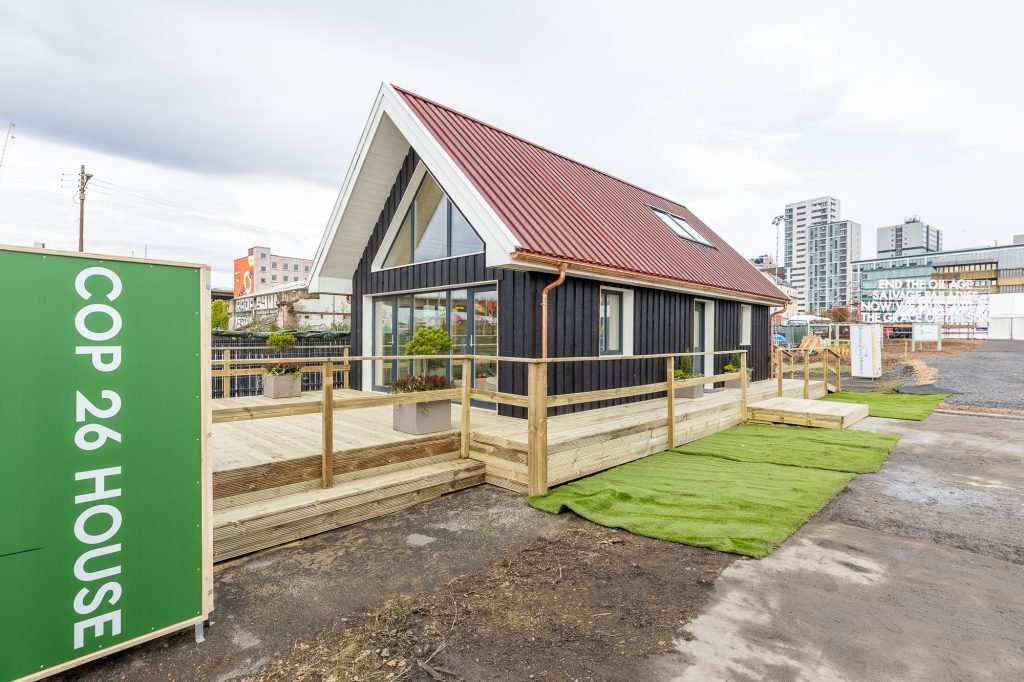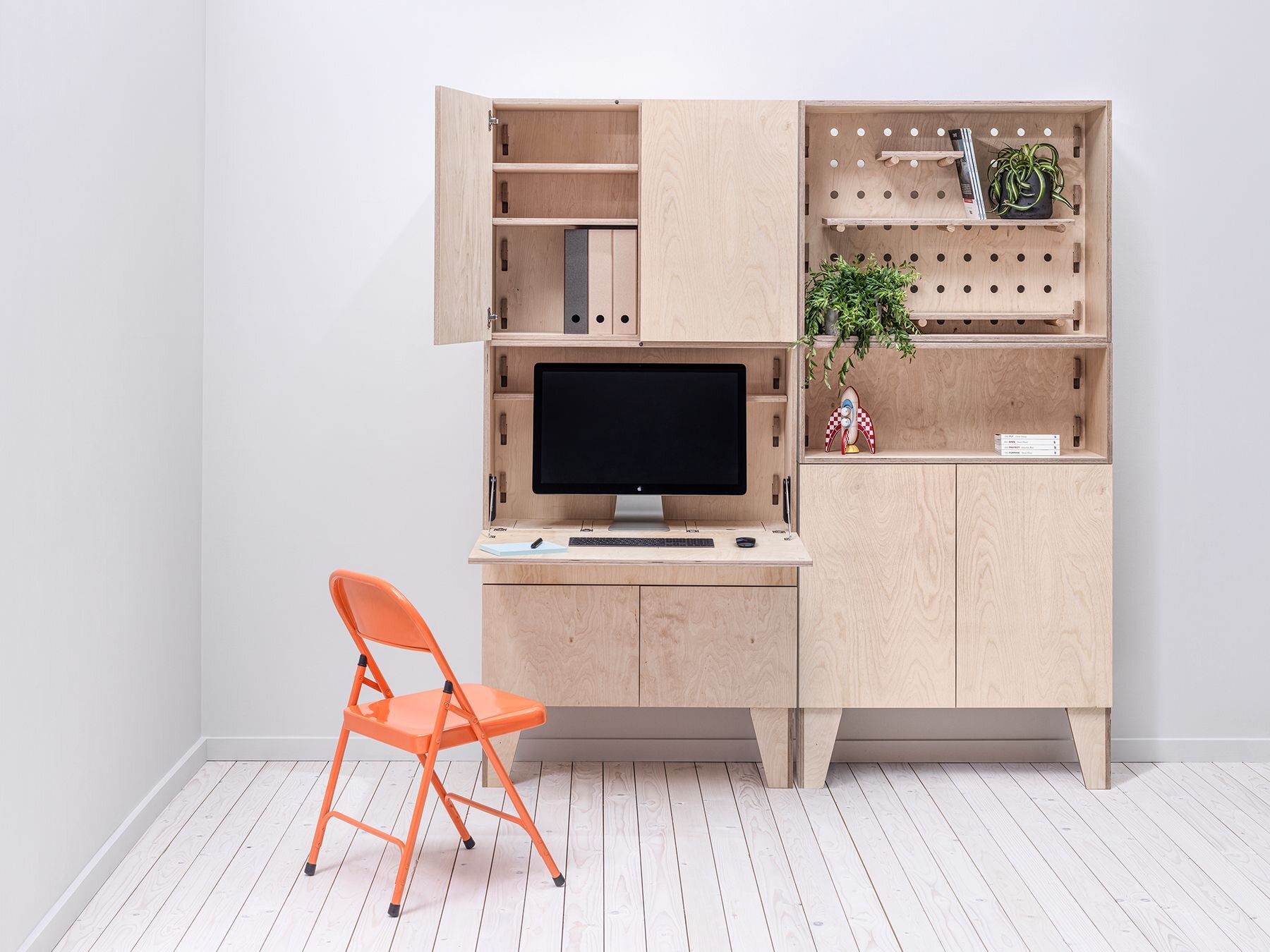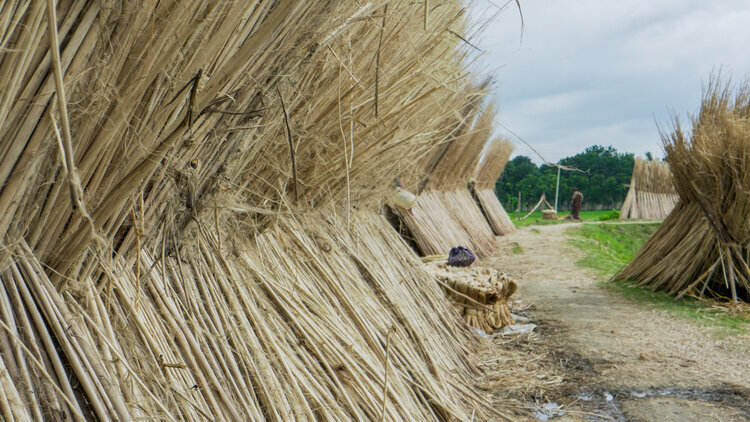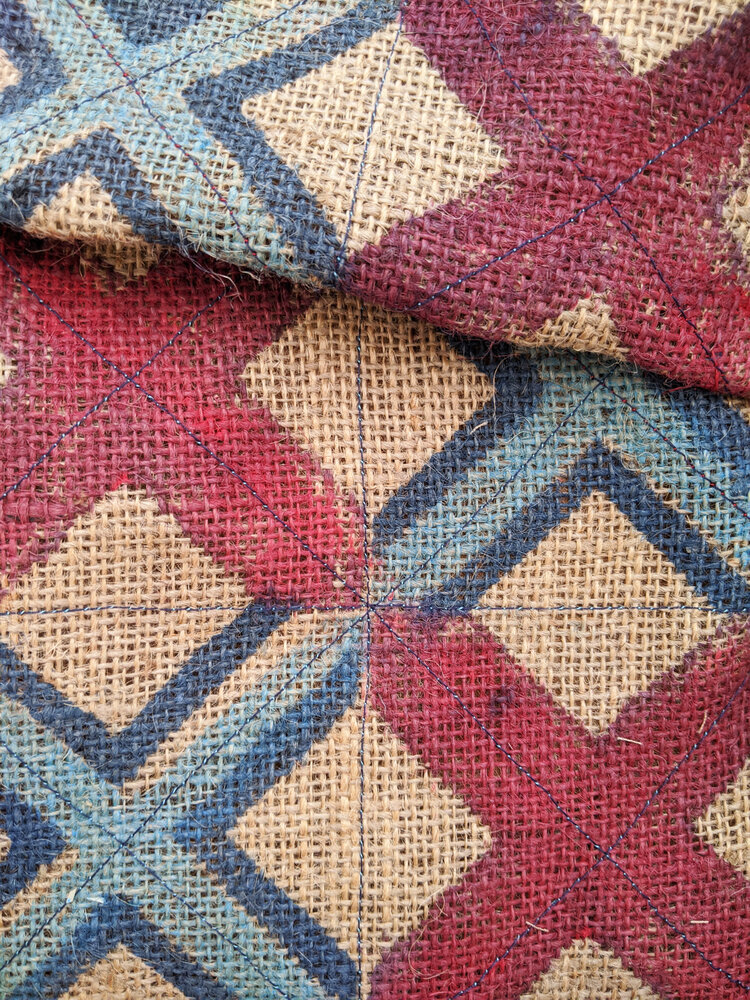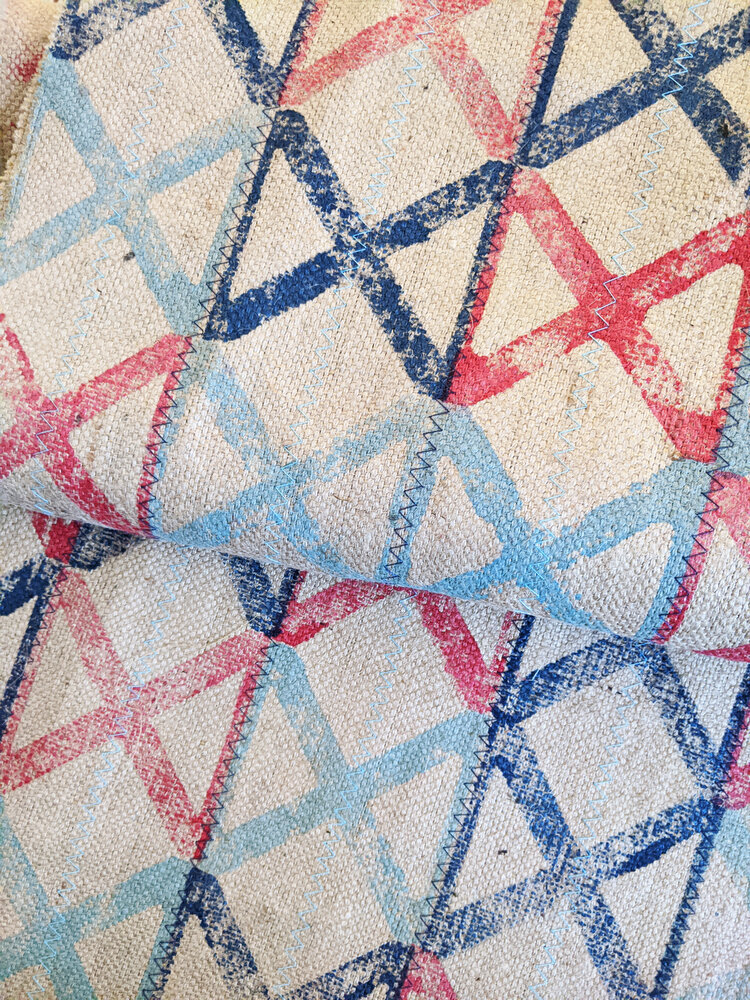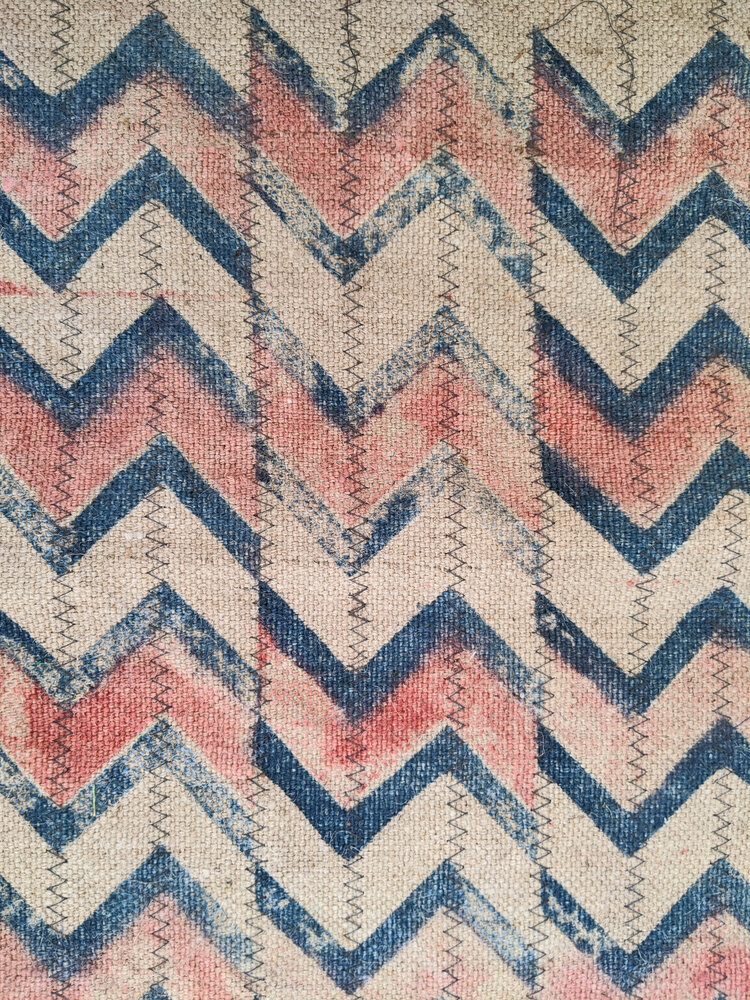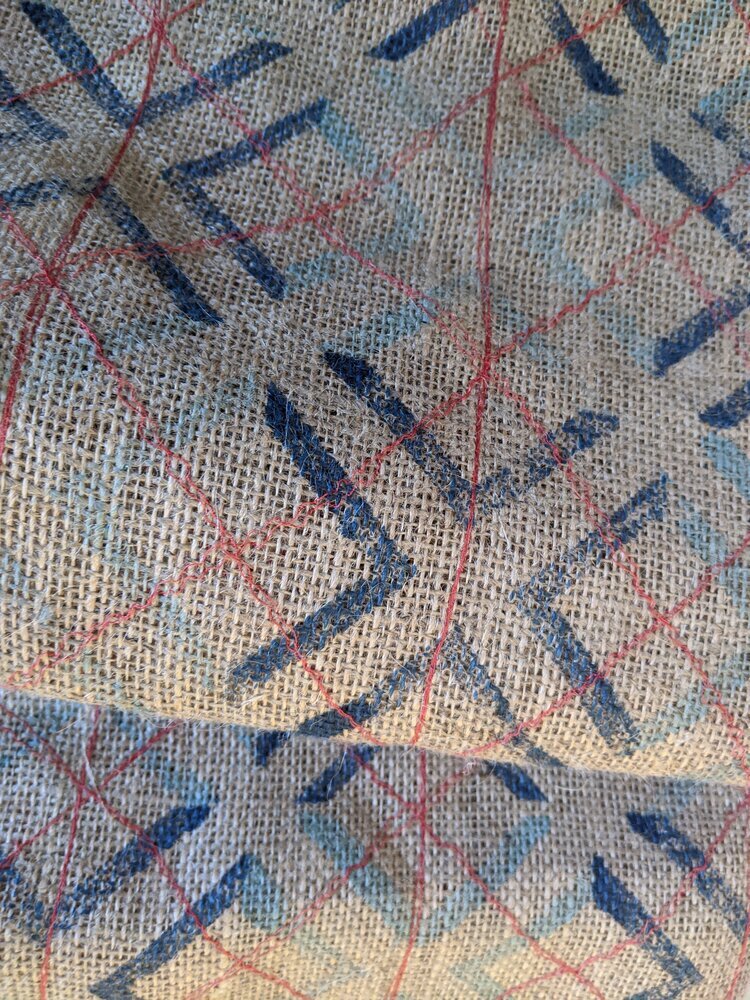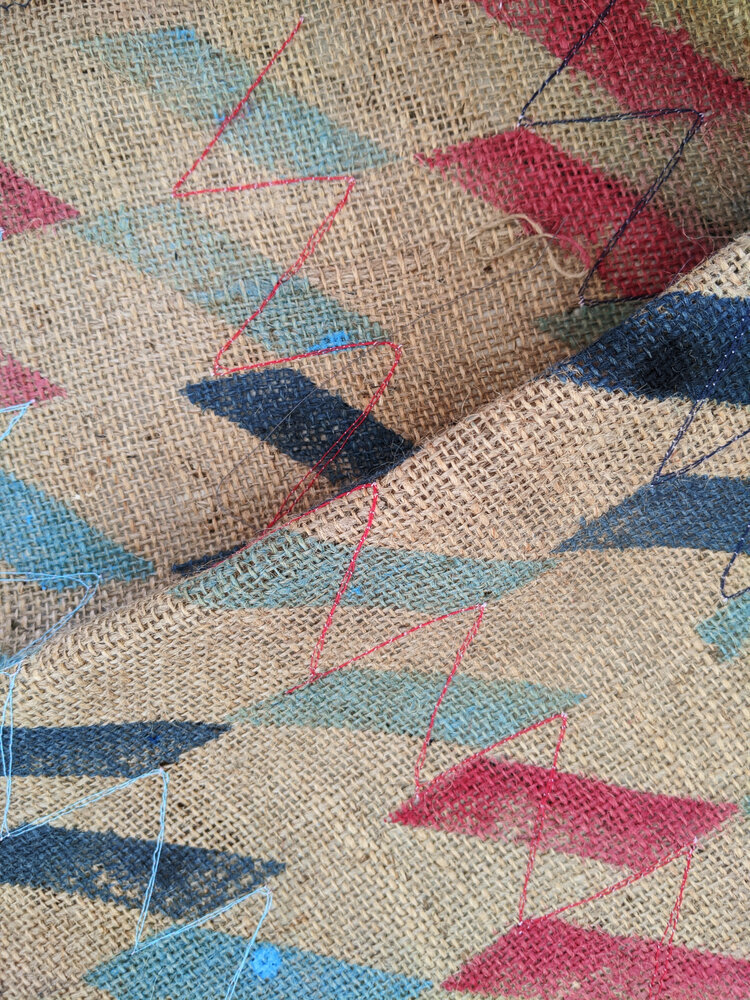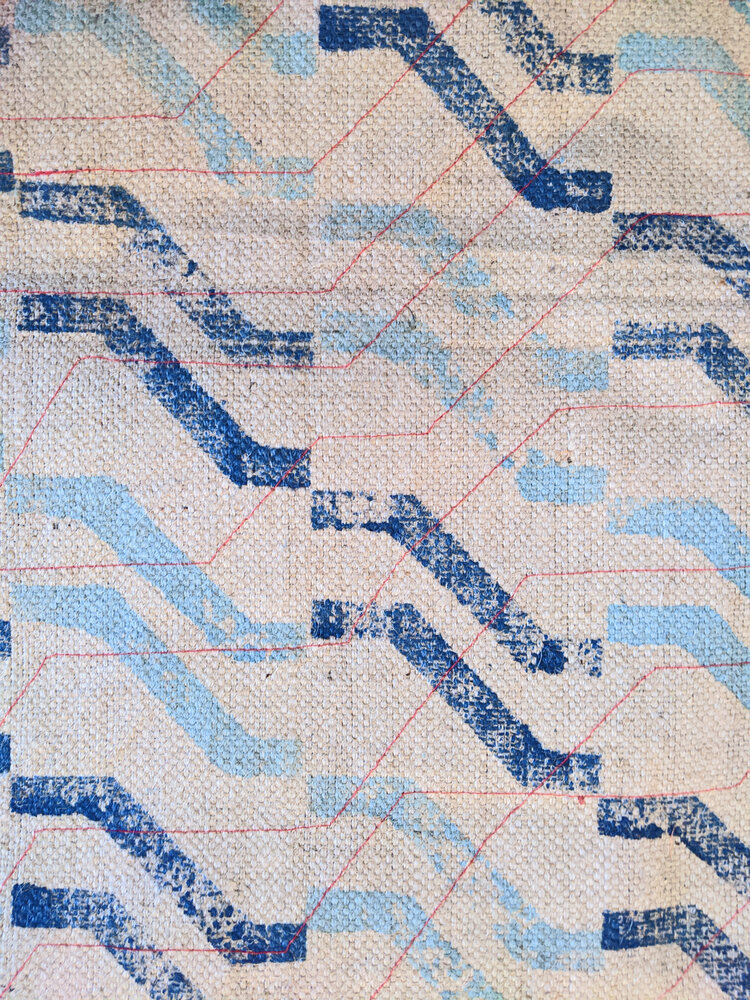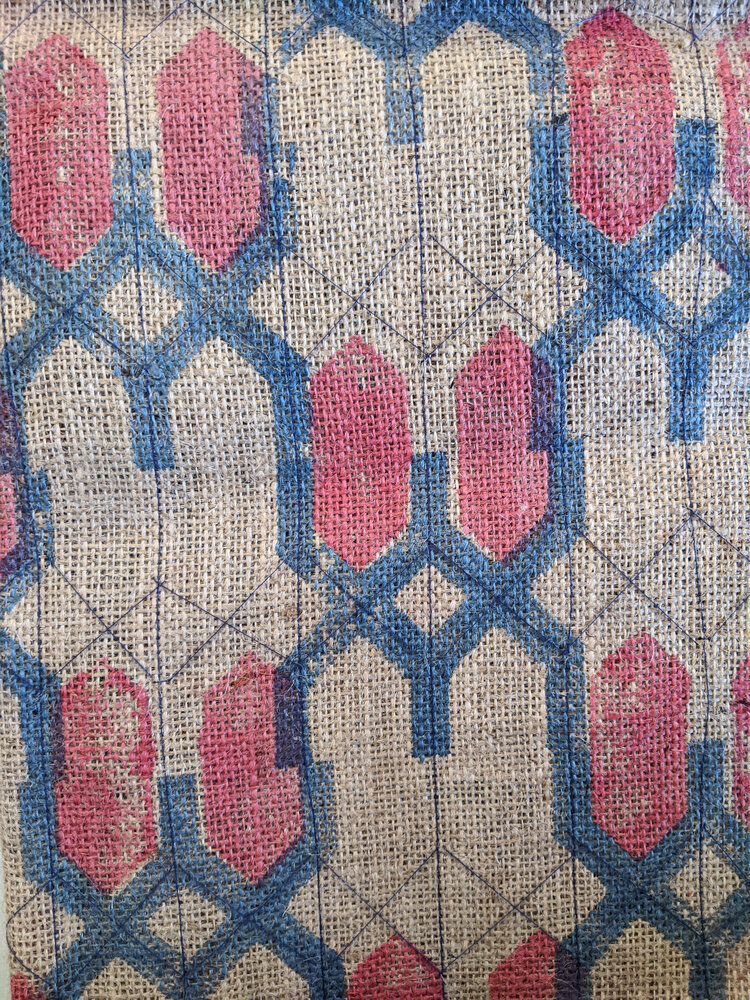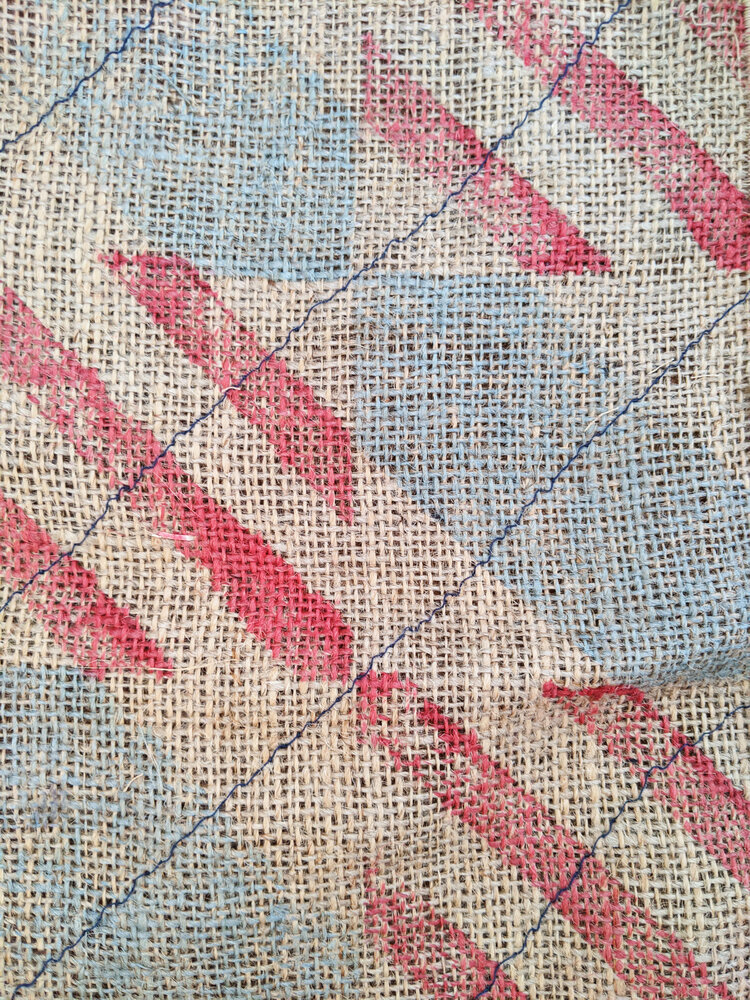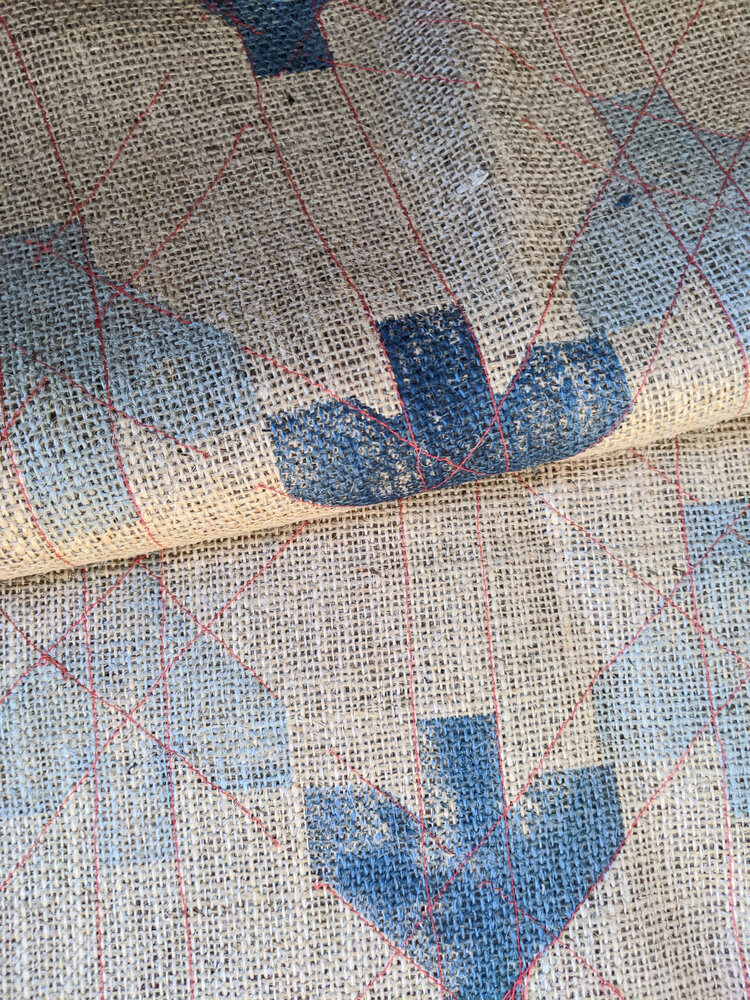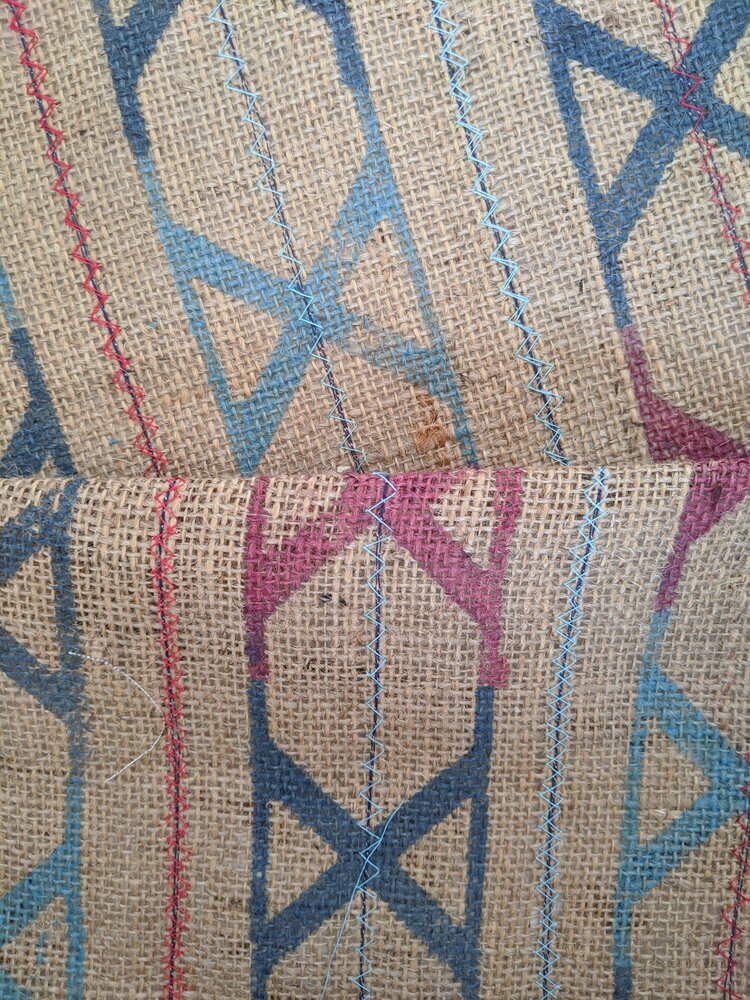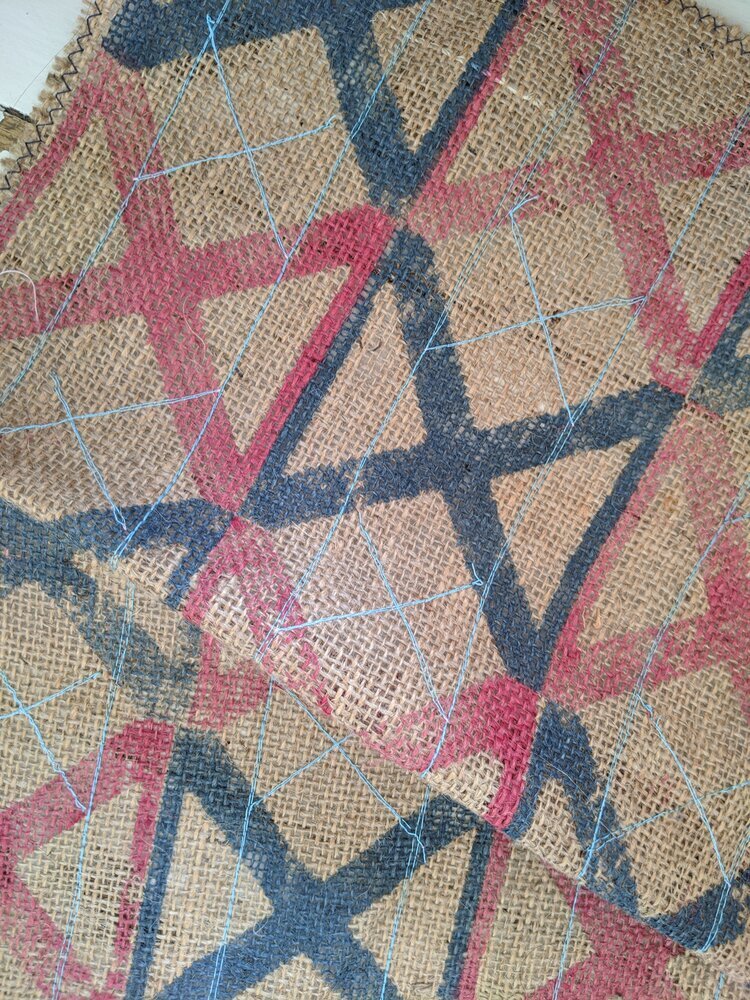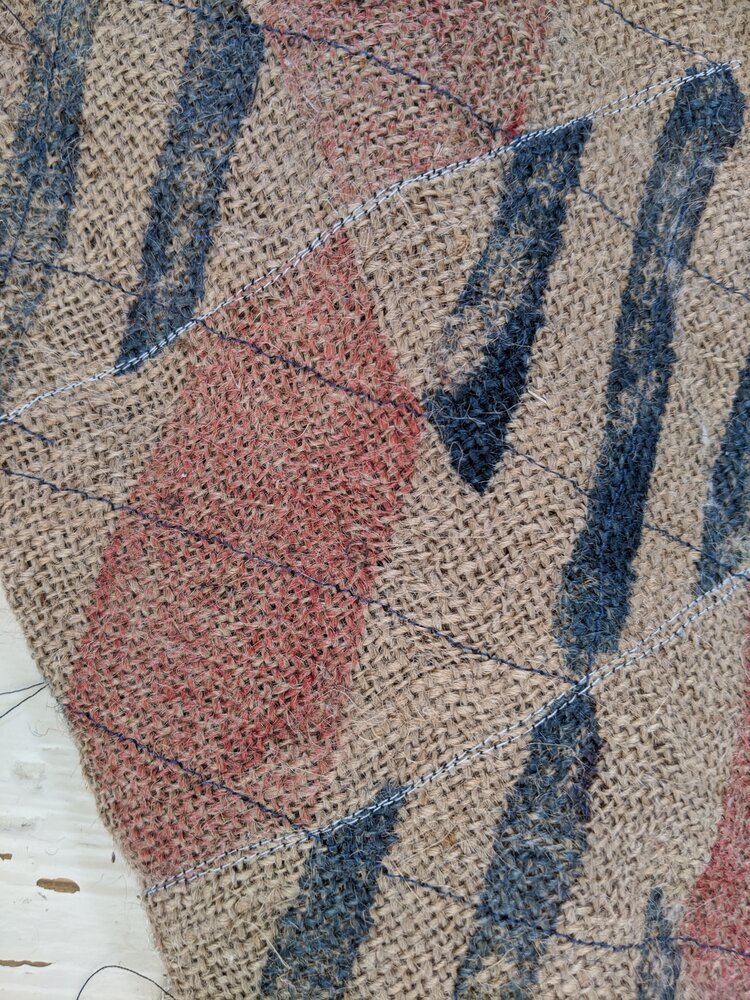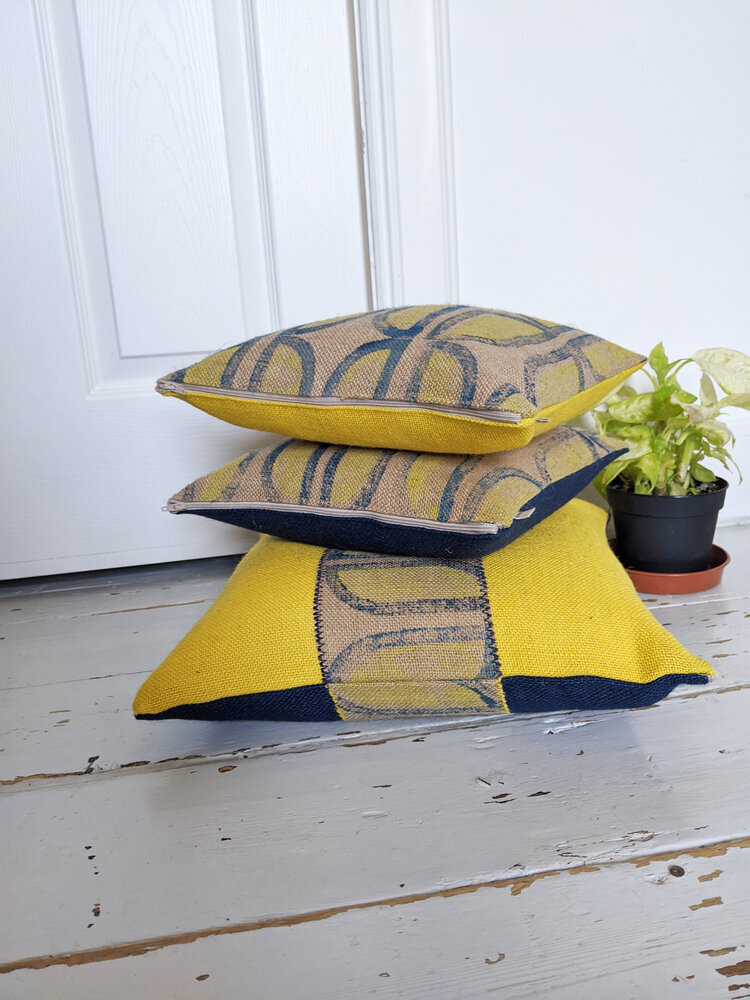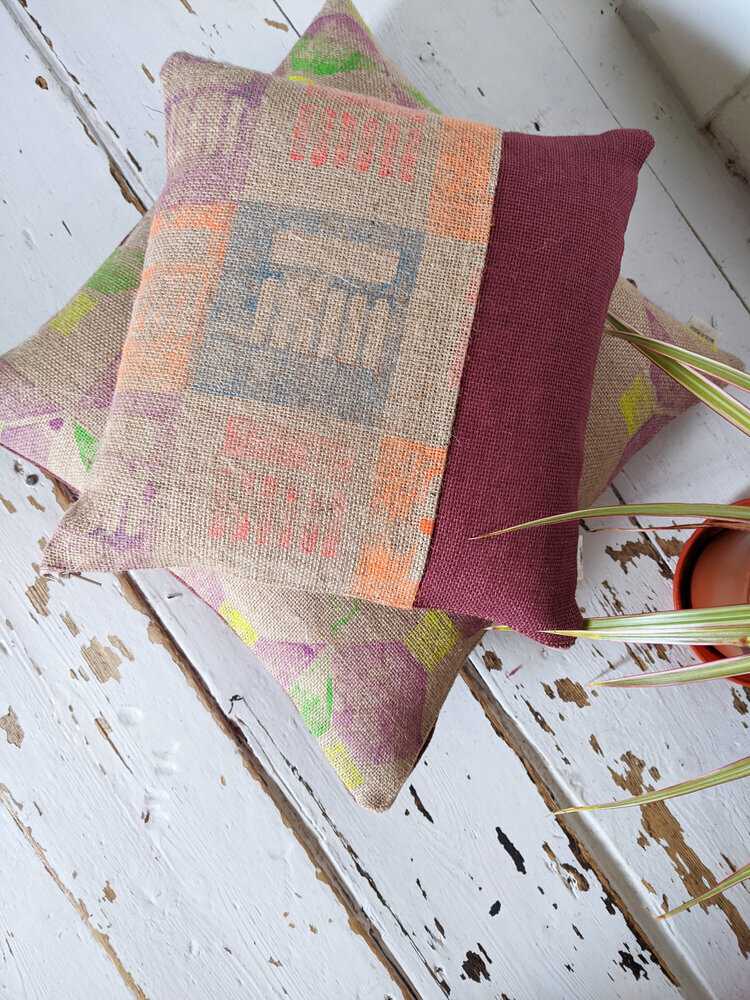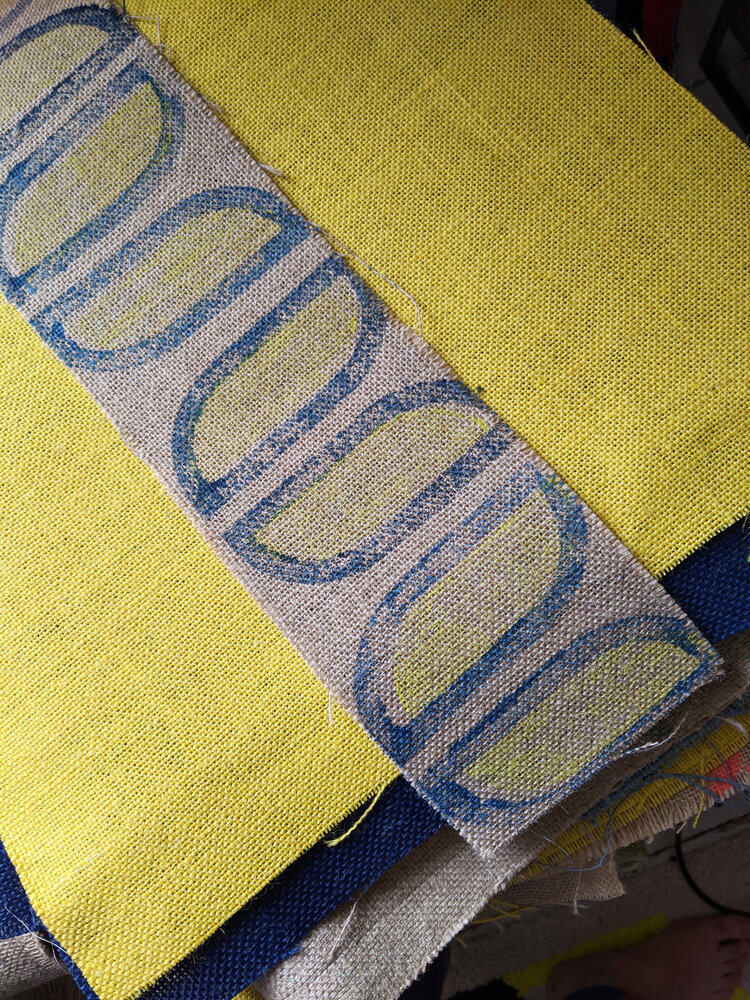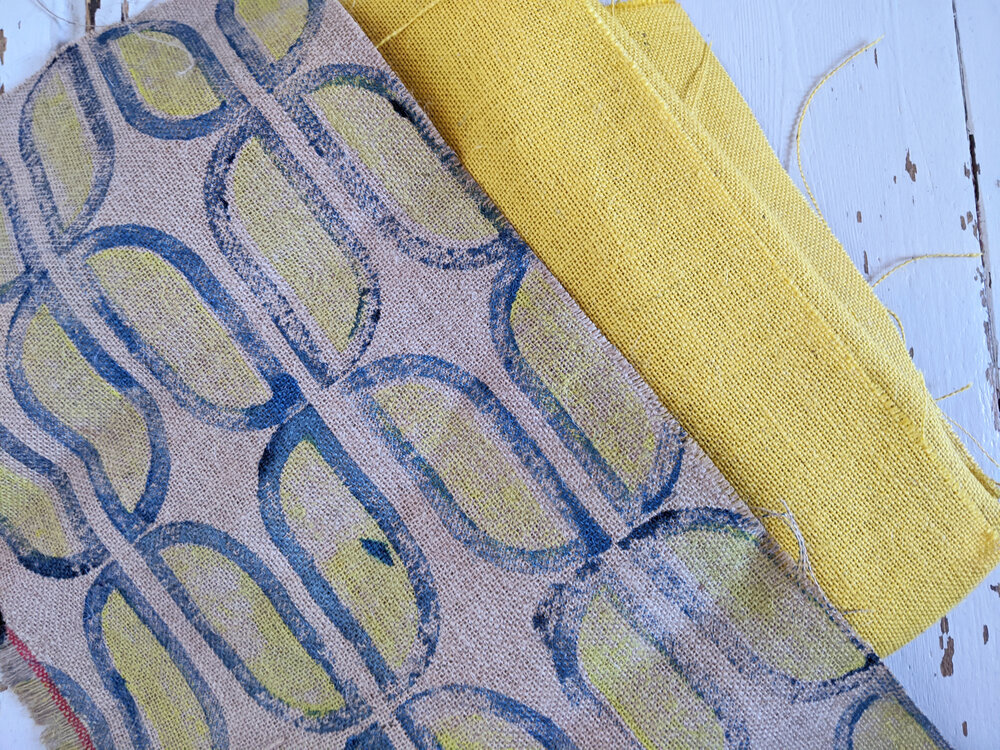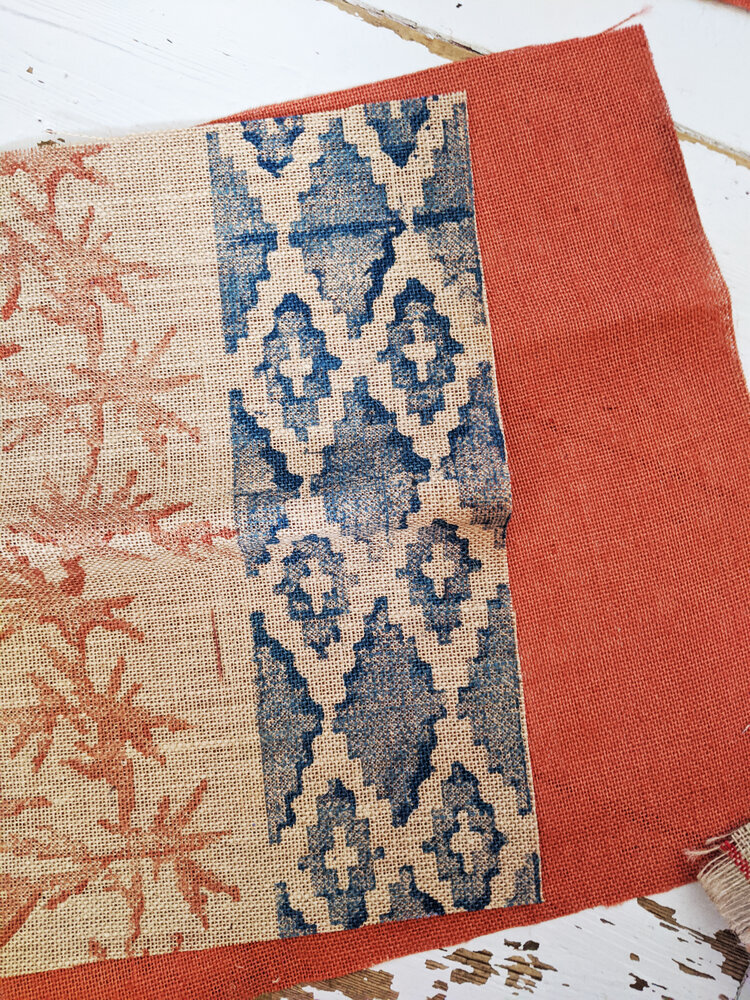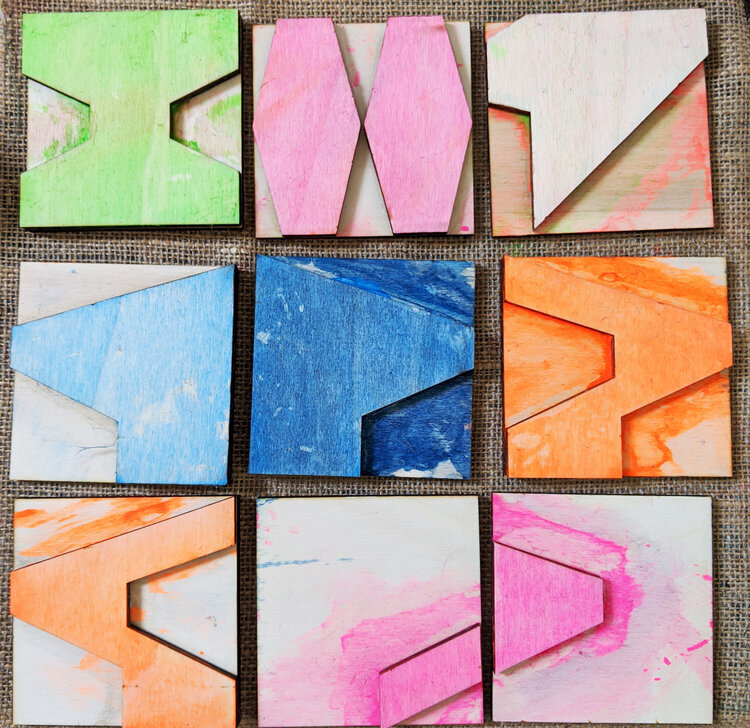hello again, long time no see - i’ve accidentally become a bit of a recluse recently, apologies. in the midst of all the usual busy things though (with new lookbooks and festive market preparations…), i do want to bring you some great posts to read about so i thought it’s time to have a brand new design conversation with someone truly brilliant – i’ve brought you here gina nadal of woven memories, who i first met last year at the CLOTH market in dalkeith. the geometric patterns on display with a computer screen really caught my attention and i had so many questions, so i thought why not have this fascinating conversation right now. so come sit down with us as we delve into process, materials and inspiration with gina!
photography by roxana alison
ZITA: hello gina! i’m very excited to speak to you today, so first things first - could you say a few words about yourself, what you do and how you got there?
GINA: hi zita, it's nice to speak with you. i’m a handweaver based in manchester, originally from barcelona. i moved to manchester in 2015 to pursue an MA in fashion graphics. during my master's programme, i developed the concept of "woven memories," which combines weaving and digital coding for three primary reasons. firstly, to celebrate the shared history of both techniques. secondly, to produce on-demand and reduce waste, challenging mass-production practices. thirdly, to create products that establish an emotional bond before they are made.
while there are numerous studies on the emotional connection people have with objects during or after ownership, there is limited research on how to design this emotional bond during the pre-ownership phase. this was my primary goal during my MA. by bridging these three areas, i encouraged people to use an online interface to write messages. the text was then transformed into abstract patterns by using binary code, which i wove into scarves.
following my MA, i secured a PhD scholarship to further research this area and contribute to knowledge. in 2022, upon graduating from my PhD, i decided to transition into a full-time venture and adapt my research into a business model. customers can now design their patterns by writing messages, and woven memories' online tool translates them into abstract patterns, which I then weave in my studio.
ZITA: what an amazing journey. i first encountered your designs at the CLOTH market in Dalkeith - as a pattern designer myself, your moving, animated display on your computer screen immediately caught my eyes. could you please explain a little bit about your fascinating process?
GINA: woven memories studio specialises in personalised handwoven homeware and fashion accessories. to personalise these items, the customer plays an active role in the process, becoming a co-designer of the final product. as mentioned earlier, customers can use woven memories' online tool and are encouraged to type a message. this message can be personal, contain the lyrics of their favourite song, or even a poem. while typing, the pattern is generated in real-time by translating the letters into patterns using binary code. once the customer is satisfied with the text, they can further personalise the design by selecting colours, adjusting the pattern repetition, or applying mirroring.
i believe these products are perfect as gifts for celebrating special occasions like birthdays and christmas, as well as for commemorating loved ones who are no longer with us.
photography by lauralaura studio
ZITA: oh yes, it is very giftable and i love the idea of translating words into the language of weaving. that makes me wonder, do sentences always come out as a workable weave or are there ones that work less than others?
GINA: certainly, some sentences result in more visually appealing patterns due to the way they stand out. for instance, the other day, i was experimenting with the online tool and wrote 'i love you' in different languages; armenian and punjabi produced patterns i particularly liked. however, i do have two favourite quotes. one is a quote from ada lovelace that encapsulates my research and the concepts behind woven memories: 'the analytical engine weaves algebraical patterns just as the jacquard loom weaves flowers and leaves.' another quote from victoria mitchells states, 'textile becomes a kind of speaking and for language a kind of making,' which i believe reflects what my products achieve—they convey messages on their own, and language brings them to life.
ZITA: that’s really beautiful, and i absolutely love the play with all the different languages! but did you ever encounter “bugs” in the process or find that certain sentences don’t make a good cloth? or do you ever find that you have to tweak the results in order to make it more aesthetically pleasing?
GINA: i haven't come across a sentence that doesn't work on the fabric, as each carries a meaningful message. sometimes, customers may only want one or two words, and in such cases, i suggest repeating the pattern to create more movement and variation. while i wouldn't say i need to alter designs, there are times when customers choose two colours, and i might suggest variations in colour or hue if i believe their initial choice may not work well.
photography by lauralaura studio
ZITA: as someone whose work integrates programming and computer systems at such a level, i feel i have to ask you, what’s your take on the latest developments in machine learning? it seems all the rage now, do you see it as a threat or do you see yourself in the future using it as a tool to create ever more complex patterns? i mean, are there even any limitations to a two-dimensional woven pattern?
GINA: i don't believe AI is inherently a threat. it's simply another new tool, but we must exercise caution in how we use it. we still have much to learn about AI and its short- and long-term consequences. only time will tell. however, i do believe that, in order for the field of weaving to progress, weavers and designers should explore the potential of AI and see what it can bring to us. i'm eager to see what other creators will develop with AI. certainly, i'll be experimenting with it, and whether or not i ultimately incorporate it into my work remains to be seen. However, i think it has the potential to expand my horizons and foster greater creativity.
to be honest, weavers have historically been early adopters of the latest technology, even dating back to the 19th century with the industrial revolution, which began by mechanising textile production.
ZITA: that makes perfect sense in the historical context of weaving indeed. now, having discussed the hyper-customisable patterns you can make from your client’s memories and words, i’d like to ask you about your own collections, which are very beautiful. were they made using the same way or did you use a more conventional design process to create these? where do you go for inspiration for your own collections?
GINA: when we met at CLOTH, i was showcasing two distinct collections: the "LOLI" collection, inspired by a particular individual, and the "RETRO" collection, which drew inspiration from nature (though interestingly, many remarked that the colours and patterns resembled vintage london public transportation fabric). the creative process for these collections differs from my usual approach, as i employed my small loom and 8-shaft tabletop loom, in contrast to my 32-shaft dobby loom. this shift in equipment imposes certain restrictions, but it's precisely these limitations that i find so appealing when weaving with my 8-shaft loom.
i continue to work in blocks, as I believe this defines my distinctive style. weaving offers an array of infinite possibilities and techniques, but there's never enough time to master them all. consequently, i made the deliberate choice to focus on one style and excel in it while remaining open to ongoing learning and exploration.
photography by lauralaura studio
ZITA: serious food for thought here, perhaps i need to learn making such choices too… anyway, i also want to talk a bit about sustainability as the textile industry in general doesn’t have a great reputation when it comes to that but in your work, you seem to be very conscious – design for durability and zero-waste principles seem to be all over your work. do you find them important for your work? do you see a demand for these from customers too?
GINA: absolutely, sustainability holds a crucial place in woven memories' core values. from the inception of the woven memories concept during my MA, sustainability has been an integral part of the vision. weaving on-demand is a central practice, avoiding mass production and significantly reducing the waste often associated with fast fashion. i believed that if I were to establish a business from the ground up, it should adhere to sustainable principles right from day one, and this commitment drives me to keep learning and improving.
continual research and exploration open doors to new opportunities for minimising our impact on this beautiful planet we call home. reducing waste is a priority, but i also embrace recycling, such as repurposing yarn from other mills after their production, effectively preventing it from ending up in landfills. this practice aligns with the ethos of 'rescuing yarn,' as advocated by shiv textiles. additionally, i recycle materials from previous projects to craft new items for our zero-waste collection. even with threads that can't be repurposed, i store them until they find a new home. just last week, i shipped my first box to sandra junele, a textile artist known for recycling threads to create stunning wall hangings—her work is definitely worth exploring.
i'm doing my utmost to minimise the negative environmental impact of my studio. while i make an effort to use locally made packaging materials with a focus on recycled materials, the next challenge i aim to address is packaging and shipping to further reduce our ecological footprint.
ZITA: it’s very inspiring to see so many textile practitioners making all these efforts, love it! now, there are some questions i ask from everyone – i want you to recommend me a book or an artist whose work is worth checking out!
GINA: that’s a great question! i can offer both a book recommendation and introduce you to an artist.
for a captivating read, i suggest ‘the fabric of civilization: how textiles made the world’ by virginia postrel. this book brilliantly combines the realms of textiles and history, making it a fascinating choice, especially if you share an interest in both subjects.
when it comes to an artist who seamlessly merges music, digital coding, and weaving, you might find the work of beatwoven intriguing. her innovative approach and unique fusion of these elements have made her a significant influence in my own work. exploring her creations could provide valuable inspiration and insights for your own projects.
photography by lauralaura studio
ZITA: fantastic, i will definitely check them out. and lastly, but most importantly, what are you working on at the moment? where can we see your work now and where will see you next?
GINA: i’ll have a busy schedule for the next few months, i’ll be in the london design fair during london design week in september, followed by the great northern contemporary craft fair in manchester in october, and concluding with handmade in chelsea in london in early november. hopefully, i’ll meet new makers, lovely people and see you there!
ZITA: oh i’d love to come to some of those! thank you so much for your time.
GINA: thank you for this lovely time with you.
-
links:
london museum of transportation - the moquette project
the fabric of civilization: how textiles made the world - virginia postrel’s website











